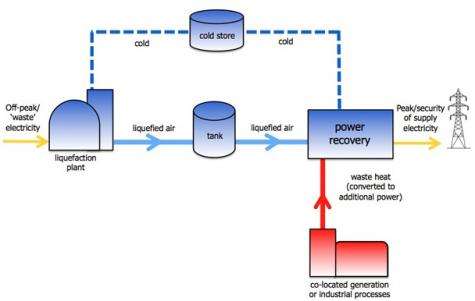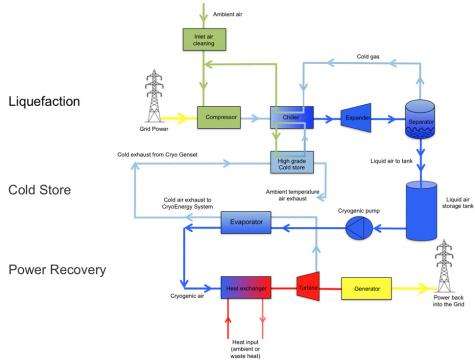March 29, 2011 weblog
Making liquid power

(PhysOrg.com) -- Power is a game of supply and demand. Unfortunately, it is also a very time sensitive game. You not only have to make the right amount of power, but you have to make it at the right time. Power is largely a perishable commodity. It can be stored in a battery, for a limited amount of time, but eventually it will wear out. This can be an issue with human generated power, but when you deal with greener methods of power, like solar and wind, we don't always have control over how much power is generated and when it is generated.
Since this creates a variety of issues with power generation, and potential waste, researchers have been interested in ways to store the power in the longer term. So, how do you keep your power in storage? You make it into a liquid.
Scientists at Britain's Highview Power Storage have figured out how to convert its excess energy into liquid air. The system that does this, which has been dubbed the CryoEnergy System, is like a very big power cold storage unit. The power uses the excess energy to power large refrigeration units. These units cool the powered air down to a temperature of -196 C, which causes it to liquefy. This air liquid, which is also known as cryogen, can then be stored in an insulated tank, that has an ambient pressure of about 1 bar.

When the power is needed, at high demand times, the air can be released into a sealed space. When the liquid reaches boiling temp, above -196C, the liquid will expand more than 700% and being to spin that staple of power generation, a turbine.
The energy return on the process is about 50%. The CryoEnergy System has been in use at Scotland's Slough Heat & Power plant for the past nine months.
More information: www.highview-power.com/wordpress/?page_id=5
© 2010 PhysOrg.com



















